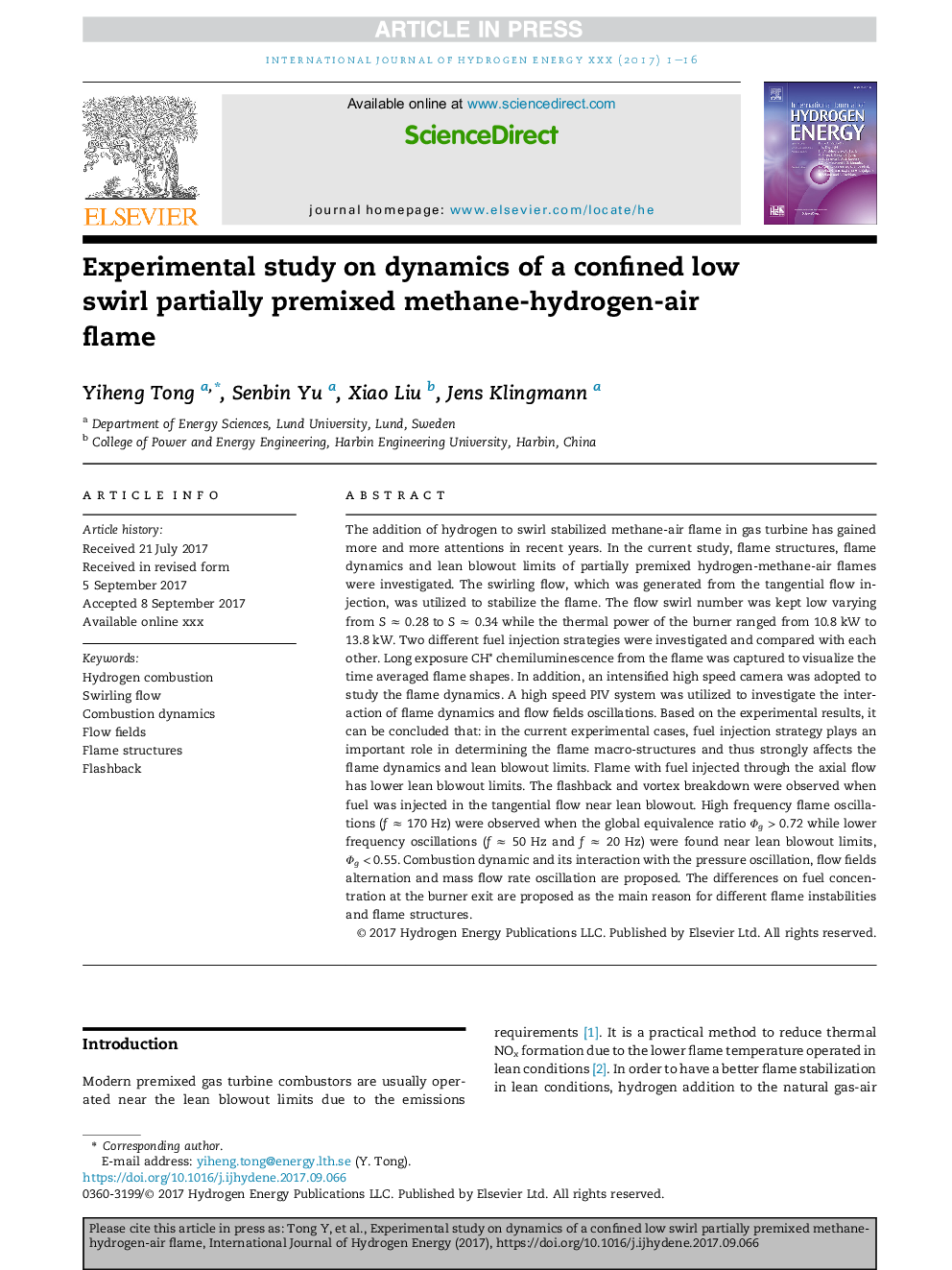| Article ID | Journal | Published Year | Pages | File Type |
|---|---|---|---|---|
| 7709756 | International Journal of Hydrogen Energy | 2017 | 16 Pages |
Abstract
The addition of hydrogen to swirl stabilized methane-air flame in gas turbine has gained more and more attentions in recent years. In the current study, flame structures, flame dynamics and lean blowout limits of partially premixed hydrogen-methane-air flames were investigated. The swirling flow, which was generated from the tangential flow injection, was utilized to stabilize the flame. The flow swirl number was kept low varying from S â 0.28 to S â 0.34 while the thermal power of the burner ranged from 10.8 kW to 13.8 kW. Two different fuel injection strategies were investigated and compared with each other. Long exposure CH* chemiluminescence from the flame was captured to visualize the time averaged flame shapes. In addition, an intensified high speed camera was adopted to study the flame dynamics. A high speed PIV system was utilized to investigate the interaction of flame dynamics and flow fields oscillations. Based on the experimental results, it can be concluded that: in the current experimental cases, fuel injection strategy plays an important role in determining the flame macro-structures and thus strongly affects the flame dynamics and lean blowout limits. Flame with fuel injected through the axial flow has lower lean blowout limits. The flashback and vortex breakdown were observed when fuel was injected in the tangential flow near lean blowout. High frequency flame oscillations (f â 170 Hz) were observed when the global equivalence ratio Φg > 0.72 while lower frequency oscillations (f â 50 Hz and f â 20 Hz) were found near lean blowout limits, Φg < 0.55. Combustion dynamic and its interaction with the pressure oscillation, flow fields alternation and mass flow rate oscillation are proposed. The differences on fuel concentration at the burner exit are proposed as the main reason for different flame instabilities and flame structures.
Related Topics
Physical Sciences and Engineering
Chemistry
Electrochemistry
Authors
Yiheng Tong, Senbin Yu, Xiao Liu, Jens Klingmann,
